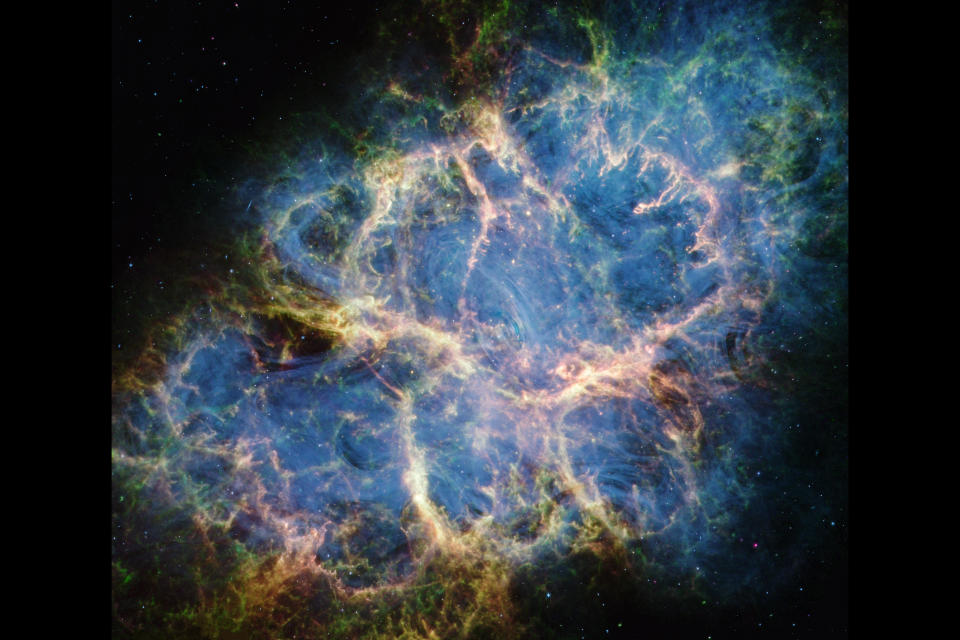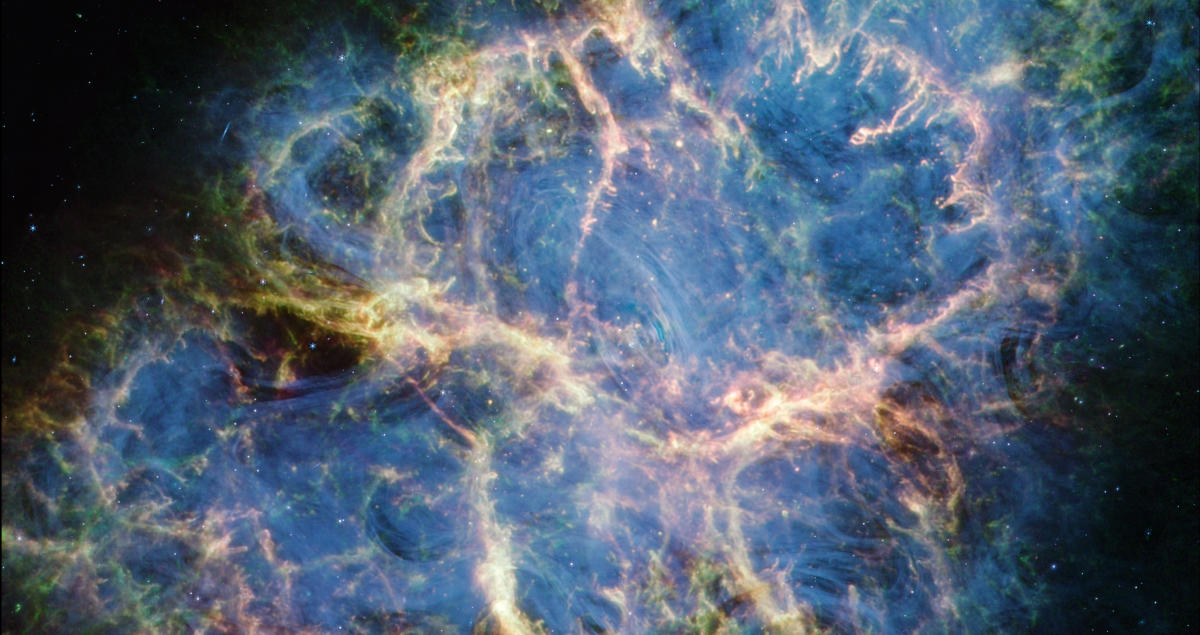A new photo of the Crab Nebula captured by the James Webb Space Telescope is helping scientists parse the composition and history of the ancient supernova remnant.
The Crab Nebula, located in the constellation Taurus, is the result of a supernova explosion that was observed on Earth in 1054 CE and was bright enough to see during the day.
Using Webb’s Mid-Infrared Instrument (MIRI) and Near-Infrared Camera (NIRCam), this new image of the Crab Nebula, released to the public on June 17, helps scientists better understand supernovae and stellar evolution.

The Crab Nebula, located more than 6,500 light-years from Earth, is the only remnant of a supernova that collapsed due to the death of a massive star. It was the first astronomical object recognized as being related to a supernova explosion.
According to the June 17 NASA Webb Mission Team press release, the Crab Nebula is highly unusual. Due to its atypical composition and very low explosion energy, scientists have previously explained it as an electron-capture supernova, a rare type of explosion that originates from a star with a less developed core.
Now the new Webb data broadens the possible interpretations of the nebula’s composition, meaning it may not have been caused by an electron capture explosion, but rather by a supernova with a weak iron core.
Webb cracks open the Crab Nebula to help scientists figure out what’s inside. 🦀
The Crab is the remnant of what was once a massive star, but is very unusual in composition, leading scientists to think its star may not have been typical either: https://t.co/bFfLPusiPn pic.twitter.com/36DljlDI1c
— NASA Webb Telescope (@NASAWebb) June 17, 2024
For the first time in history, the Webb telescope, with its sensitive infrared capabilities, has focused on two regions in the Crab’s inner filaments and mapped the light emitted by the dust in high resolution.
After mapping the warm dust emission with Webb, the team created a well-rounded picture of the dust distribution: the outer filaments contain relatively warmer dust, while cooler grains occur near the center.
While other supernova remnants have dust in the center, the Crab Nebula’s dust is found in the dense filaments of the outer shell.
Webb also mapped the light from the dust in the Crab Nebula in high resolution for the first time. Unlike other supernova remnants, where dust is concentrated in the center, the Crab Nebula’s dust is found in the dense filaments of the outer shell. pic.twitter.com/7yVNEZt4Bt
— NASA Webb Telescope (@NASAWebb) June 17, 2024
“The dust grains, shown as fluffy magenta material, form a cage-like structure most clearly visible in the upper left and right corners of the remnant,” according to Webb’s press release.
“Filaments of dust also run through the interior of the Crab and sometimes coincide with areas of doubly ionized sulfur (sulfur III) that are colored green. Yellow-white spotted filaments, which form large loop-like structures around the center of the supernova remnant, represent areas where dust and doubly ionized sulfur overlap.”
“The Crab Nebula follows a tradition in astronomy: the closest, brightest, and best-studied objects are often bizarre,” said Nathan Smith of the University of Arizona Steward Observatory and co-author of the paper.
